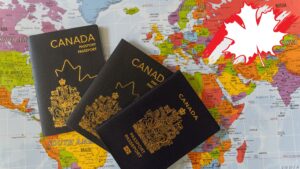The U.S. Department of Education (ED) is undergoing significant shifts in its key policies, updates, and initiatives, largely influenced by the priorities of the Trump administration, which began its second term in January 2025. Based on available information, reflecting the current landscape and recent developments.
The U.S. Department of Education historically focuses on ensuring equal access to education, administering federal financial aid, collecting educational data, and enforcing civil rights protections. However, current policy directions under the Trump administration emphasize reducing federal oversight and reshaping educational priorities:
You May Like
- Reduction of Federal Role: Central policy push is to limit the ED’s influence, aligning with long-standing conservative goals to devolve education governance to states. This includes proposals to dismantle the department entirely, though such a move requires congressional approval, which remains uncertain.
- Elimination of Diversity, Equity, and Inclusion (DEI) Programs: Administration has directed the ED to eliminate DEI initiatives, framing them as “illegal discrimination” and “wasteful spending.” This shift refocuses the agency on what it describes as core educational functions, though specifics remain vague.
- School Choice and Parental Rights: Policies are being crafted to promote school choice, such as vouchers redirecting public funds to private schools, and to enhance parental control over education, reflecting priorities outlined in Project 2025, a conservative policy blueprint influencing the administration.
Updates
Recent updates indicate rapid policy changes and administrative actions:
- Executive Actions: Since January 2025, the Trump administration has issued executive orders aligning with Project 2025’s education agenda. For instance, an order reportedly diverts funding from public schools to private school vouchers, though details on implementation are still emerging.
- DEI Crackdown: Posts on X and reports suggest the ED has launched a public portal to report DEI practices in K-12 schools, signaling an aggressive stance against what the administration calls “divisive ideologies.” Schools have been given a 14-day compliance deadline starting March 1, 2025, with threats to withhold federal funding for non-compliance.
- Budget Cuts: Reports indicate a $900 million cut targeting the Institute of Education Sciences, the ED’s research arm, attributed to Elon Musk’s cost-cutting initiatives under the Department of Government Efficiency (DOGE). Move has raised concerns about diminished educational research capacity.
More Updates: https://www.ed.gov/
Initiatives
While the ED traditionally champions initiatives like STEM education, career and technical education, and support for underserved students, current initiatives under the new administration reflect a pivot:
- Anti-DEI Enforcement: A key initiative involves enforcing the rollback of race-based policies, including those perceived as race-neutral but diversity-focused. The ED is pressuring schools to align with a “biological binary” interpretation of sex discrimination laws, reversing Biden-era Title IX expansions protecting LGBTQ+ students.
- Student Loan Policy Shift: The administration is moving away from Biden’s student loan forgiveness efforts, with plans to privatize or restructure federal loan programs, potentially transferring them to the Treasury Department. Income-driven repayment plans may face higher payments or elimination, though legislative hurdles remain.
- Data Collection Limitation: Consistent with Project 2025, there’s an initiative to reduce the ED to a statistics-gathering entity, curtailing its ability to enforce civil rights or set standards, though programs like Pell Grants and IDEA funding persist due to statutory protections.
Context and Challenges
The ED’s $238 billion budget (as of 2024) supports critical programs—Title I for low-income schools, IDEA for students with disabilities, and Pell Grants for college students—serving millions nationwide. Dismantling or significantly altering the department risks disrupting these, especially for vulnerable populations. Critics, including the National Education Association, warn of increased inequity, while proponents argue it restores local control. The administration’s ability to enact sweeping changes is constrained by Congress, where bipartisan support for federal education roles has historically blocked abolition efforts.
March 5, 2025, the U.S. Department of Education is at a crossroads, with its key policies shifting toward reduced federal involvement, anti-DEI measures, and school choice, driven by executive actions and influenced by Project 2025. Updates reflect a fast-moving agenda, but initiatives face legal, legislative, and public resistance. Department’s future hinges on how these tensions resolve in the coming months. For the latest developments, ongoing monitoring of official ED announcements and credible news sources is essential, given the fluidity of the situation.
FAQs
1. What does the U.S. Department of Education do?
The U.S. Department of Education oversees federal education policies, distributes funding, enforces laws on equal access, and ensures quality education nationwide.
2. How can I apply for federal student aid?
Apply for federal student aid by completing the Free Application for Federal Student Aid (FAFSA) at studentaid.gov.
3. How do I check my federal student loan balance?
You can check your loan balance by logging into your account at StudentAid.gov or contacting your loan servicer.
4. How do I contact the U.S. Department of Education?
You can reach them via phone at 1-800-USA-LEARN (1-800-872-5327) or visit their official website at www.ed.gov.
5. What is the Public Service Loan Forgiveness (PSLF) program?
The PSLF program forgives student loans for eligible government or nonprofit employees after 120 qualifying payments under an income-driven repayment plan.
6. How can I find accredited colleges and universities?
You can check accreditation status using the Database of Accredited Postsecondary Institutions and Programs (DAPIP) at ope.ed.gov.
7. What grants are available for students?
Common grants include the Pell Grant, TEACH Grant, and FSEOG Grant, which help students with financial need.
8. How do I report a student loan scam?
You can report scams to the Federal Trade Commission (FTC) at ReportFraud.ftc.gov or contact the Department of Education’s Office of Inspector General (OIG).
9. What are the latest education policies from the Department of Education?
Policies change frequently; visit www.ed.gov for updates on funding, regulations, and school initiatives.
10. How can I file a complaint about a school?
You can file complaints regarding discrimination, accessibility, or funding issues through the Office for Civil Rights (OCR) at ocrportal.ed.gov.








